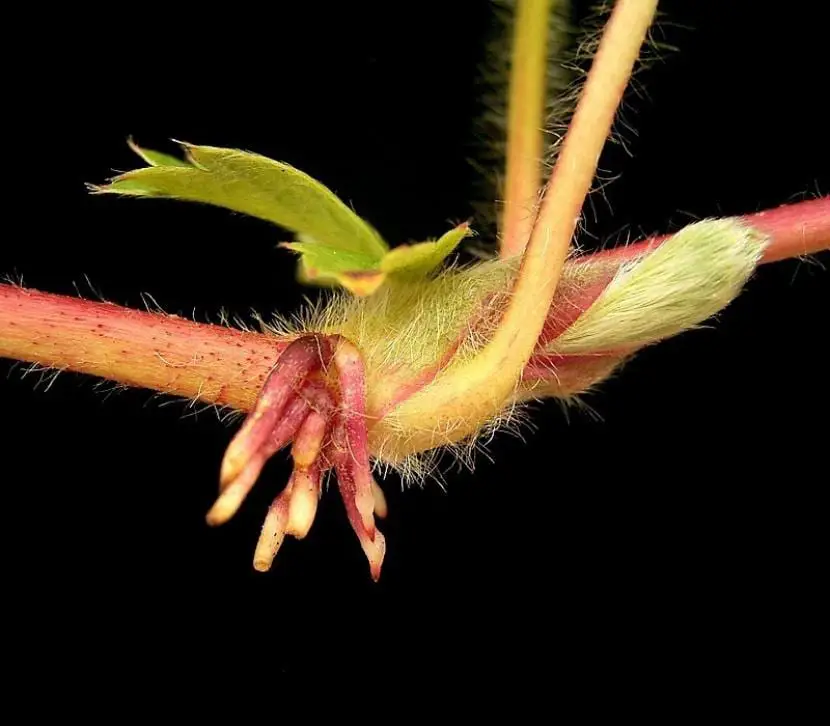

The root system is a very important part of plants. Thanks to it they can anchor themselves in the ground, absorb the nutrients and moisture they need (or rather, that is available ), and also, in many cases, allow them to colonize other territories. There are different types (main, secondary), but this time we are going to talk about the adventitious.
What is an adventitious root? If you want to find out, then I’ll explain it to you.
What are adventitious roots?


The adventitious root or aerial root It is one that does not arise from the radicle of the embryo (that is, from the fertilized ovule) but from any other part of the plantas for example in underground stems, old roots or in some portion of the stem (little plant that sprouts from the foot or base of the trunk / stem of another). It may or may not have branches, but it may have a homogeneous shape and size, which means that they all have the same length and thickness.
Its useful life depends a lot on the plant, but for example in those that are perennial it can live for several years before drying out and leaving the root system to be exclusively in charge of fulfilling the functions mentioned above (anchoring, absorption of nutrients). Of course, if given the opportunity, it will produce new adventitious roots.
What is the function of the adventitious root?
This type of root has several functions:
Colonize new territories
One of the objectives of plants is to invade new areas. Most do it only through their seeds, letting the wind, water or animals carry them away from where their ‘parents’ are, but there are others that, in addition to producing seeds, also develop adventitious roots that They will help them to spread out and go further.
Improve anchoring to the ground
Depending on the conditions of their habitat, they must develop special roots to remain well attached to the ground. A) Yes, in areas where strong winds blow, or in those that tend to be flooded at some part of the year, the plants need them so that nothing can dig them up; hence its thickness is always greater than that of the secondary root, for example, which is responsible for absorbing the water and the nutrients dissolved in it.
Provide oxygen
The adventitious roots of plants that live in regions where floods are part of the landscape fulfill a vital function: that of absorbing oxygen through their pores, but only when these are exposed and not under water. Thus, the trees that make up mangroves, for example, survive without much trouble when the tide rises.
What types of adventitious plants are there?
There are many plants that have adventitious roots, like these:
Rubber plant


Image – Wikimedia / PseudoscienceFTL
Most Rubber plant they begin life as epiphytic plants, growing on the branches of other trees. There are some who become ‘murderers’, such as the ficus benghalensisthat as its roots develop and grow, they strangle the tree that supports it. This type of plants They should only be grown in very, very spacious gardens, where the climate is warm.
Wild strawberry


Image – Wikimedia / Oxfordian Kissuth
His scientific name is Fragaria vescaand is a perennial herbaceous plant of the perennial type that grows 20-30 centimeters tall widely cultivated in orchards and flower beds. Stolons arise from the basal rosette, which produce adventitious roots where replicas of the mother plant will emerge.
Common grass


Image – Wikimedia / Bidgee
It is a widely used grass for lawns, whose scientific name is Cynodon dactylon. It develops greyish-green leaves, 4-15cm long, of a dark green color, which sprout from stems that they reach a maximum height of 30 centimeters.
Ivy


The ivythe Ivy helix in botanical jargon, it is an evergreen climber widely cultivated in temperate and warm regions, even indoors. It does not exceed 20 centimeters in height at ground level, although if it has support to climb it could reach 30 meters.
Corn


The plant of the corn o zea maysis one of the most important worldwide. Develops stems up to 1 meter tall from which elongated leaves sprout. The female specimens produce inflorescences that are no more than the ears .
pandanus


Image – Flickr / David Eickhoff
The Pandanus They are tropical trees or shrubs of great ornamental value. Its leaves grow in rosettes, and are green or brownish depending on the variety and / or cultivar. The trunk is rather thin, about 30 centimeters thick, and is held in place by its adventitious roots. If the conditions are right they can reach 6-10 meters in height.
Verschaffeltia splendid


Image – Wikimedia Commons / Drew Avery
It is one of the few species of palm trees that produces adventitious roots, and one of the most beautiful to have in tropical or subtropical gardens. Develops a single trunk 7-8 meters highcrowned by pinnate leaves.
What did you think of this topic? Do you know other plants that have adventitious roots?

